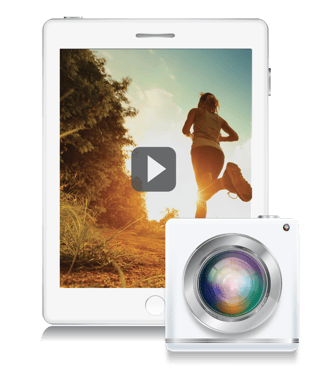
For several years, the amount of time people spend consuming video content online has increased significantly. This trend is not changing in 2018 as viewers now watch more video content online than on traditional television. The growing platform of online video continues to create an immense opportunity for advertisers.
According to Google, 50% of internet users looked for online video related to a product or service before they visited a store, whether in person or online. Video is impactful and drives emotion and trust behind decision-making. Arguably, a strong marketing plan for any business must include an ongoing video advertising strategy.
When meeting with my clients, most understand the benefit and need of producing strong video content, but the questions I hear most common are, “Which online video platforms should I advertise on?” and “What are the benefits of each?” In this post, I’ll help make sense of three platforms that have a large and engaged audience, but that can be leveraged to impact a business’s advertising success and increase ROI.
TrueView YouTube Video:Whether it’s watching the latest and greatest fitness videos or a tutorial on how to make a new recipe for your weekend dinner party, for many of us, YouTube has become the first place to find answers. Nearly 5 million videos are watched each day, creating a large audience for advertisers to target. While YouTube’s reach is certainly impressive, it’s only truly effective if a message is getting in front of the right people at the right moment. With YouTube being owned by Google, it allows for “In-Market” targeting that serves video ads to those who have recently been searching for and consuming online content related to services/products that a company offers. With YouTube’s TrueView, an advertiser will only pay for a video ad that someone has chosen to watch. Viewers have the option to skip ahead or watch the video in its entirety. Only paying for full views of an ad ensures the advertiser reaches an audience that is engaged and interested in the video content. Since YouTube is owned by Google, it has access to all its data that it’s collecting related to online consumer behavior.
Facebook Video:
You can no longer scroll through your Facebook News Feed without noticing that almost every other post contains video content. Facebook users are spending time with video content five times longer than static content. To capitalize on this behavior, Facebook offers advertising campaign objectives specific to video ads. This allows advertisers to clearly define the goals of their campaign and easily measure the results related to the specific objective they chose during campaign setup.
Video advertising objectives include driving clicks to a website, lead generation, video views and conversions on your website or in your app, just to name a few. Not only is advertising on Facebook extremely measurable and targeted, there is no other platform where video can be shared so rapidly and effortlessly. Facebook video advertising drives awareness and builds confidence in a brand, and it is proven to drive sales.
Connected TV:
Like many others, I ditched cable television years ago. All of the television programming that I watch now is consumed through streaming devices such as Roku or Apple TV. The usage of Connected TV continues to rapidly increase, as 2017 was yet another year of double-digit growth in the U.S.
According to a recent eMarketer survey, 62% of households have already shifted to these connected devices. Because of this, many advertisers are converting their traditional television advertising dollars to Connected TV. On average, Connected TV viewers complete 98% of video ads as compared to ad completion rates of other devices. Furthermore, unlike traditional TV advertising, the campaign investment is trackable and the target audience can be better defined.
In order to view Connected TV, you are required to create an account where data such as online behavior, location, interests and demographic targeting can be taken into consideration for advertisers running a campaign within the platform. How do you know if this is working? The campaign reporting is much like you’d see from other digital advertising campaigns. The number of views, clicks, conversions and direct responses can all be reported on.
To learn more about video advertising platforms and how you can use them to benefit your business, a DMG + ThriveHive digital specialist can help. Contact us for a free consultation on your advertising & marketing strategy including your digital presense!




